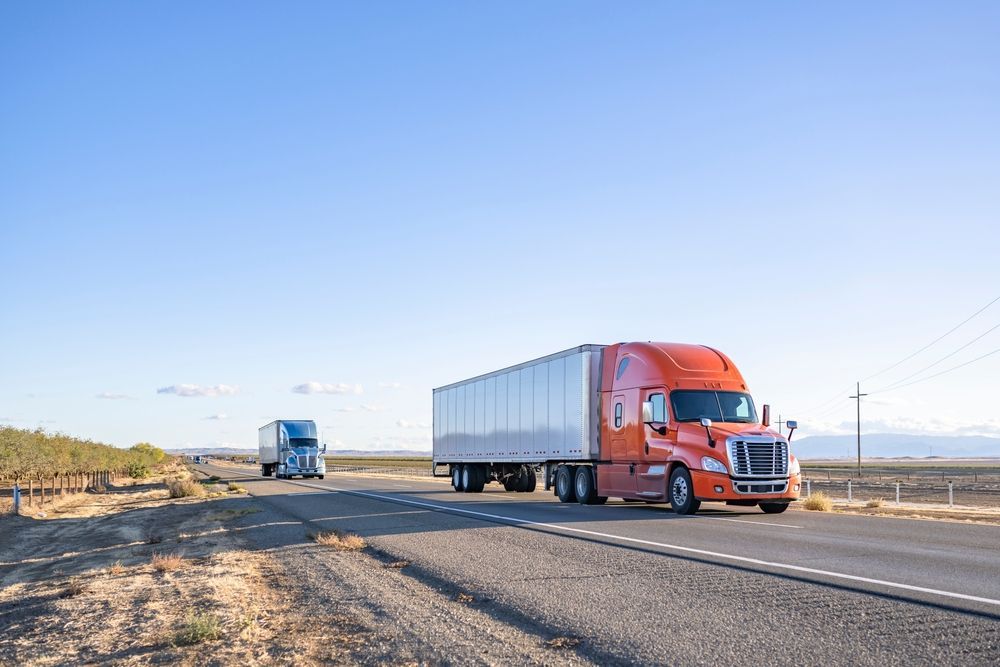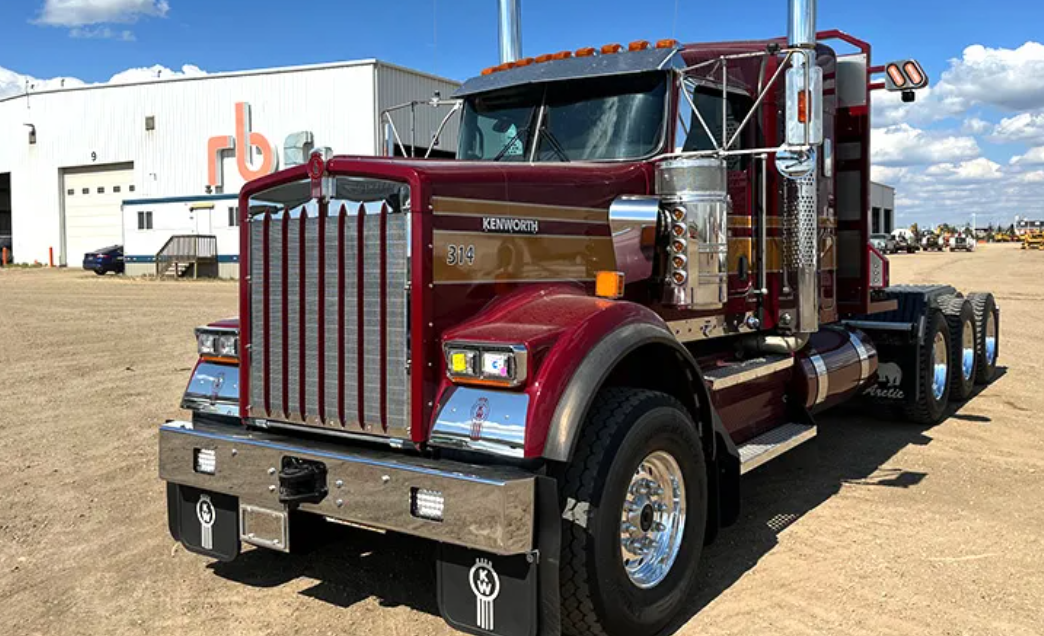A Comprehensive Guide

OTR trucking is more than just a job; it's a lifestyle that offers unique challenges and rewards. For those who are new to the industry or considering a career as an OTR trucker, understanding the ins and outs of this profession is essential. In this comprehensive guide, we’ll explore everything you need to know about OTR trucking—from what it is and how it works to the benefits, challenges, and opportunities it presents.
What is OTR Trucking?
OTR trucking, also known as long-haul trucking, involves transporting goods over long distances, often crossing state lines and sometimes even national borders. Unlike local or regional trucking, where drivers return home at the end of the day or after a few days on the road, OTR truckers typically spend weeks away from home, covering thousands of miles across the country.
OTR trucking is the backbone of the American economy, moving goods between manufacturers, distribution centers, and retailers. From consumer products and raw materials to food and machinery, OTR truckers ensure that the supply chain runs smoothly, delivering goods to every corner of the nation.
How OTR Trucking Works
OTR trucking operates on a complex system that involves coordination between drivers, dispatchers, shippers, and receivers. Here’s a basic breakdown of how it works:
- Load Assignment: Once a shipment is ready to be transported, a load assignment is created. Dispatchers assign loads to drivers based on their location, availability, and the type of equipment they have.
- Pre-Trip Inspection: Before hitting the road, OTR truckers perform a thorough pre-trip inspection of their truck and trailer. This includes checking the tires, brakes, lights, and other essential systems to ensure everything is in good working order.
- Route Planning: OTR truckers must plan their routes carefully to avoid delays and ensure timely delivery. This includes considering factors such as road conditions, weather, and traffic.
- Driving: OTR truckers spend most of their time driving. Depending on the load and the distance, they may drive for several hours a day, covering hundreds of miles. Federal regulations limit driving time to 11 hours within a 14-hour period, followed by a 10-hour break.
- Delivery and Unloading: Upon reaching the destination, the driver coordinates with the receiver to unload the goods. In some cases, drivers may be responsible for unloading the truck themselves, while in others, the receiver handles it.
- Return Trip or New Load: After delivering the load, OTR truckers either return to their home base or pick up a new load to transport to another location. The cycle continues until they are scheduled to return home.
The Benefits of OTR Trucking
OTR trucking offers numerous benefits, making it an attractive career option for many. Here are some of the key advantages:
High Earning Potential
OTR truckers typically earn higher salaries than local or regional drivers due to the longer distances and extended time spent on the road. According to the Bureau of Labor Statistics, the median annual wage for heavy and tractor-trailer truck drivers was $48,710 in 2022, with top earners making over $66,000. Additionally, many companies offer bonuses, incentives, and per diem pay for food and lodging, further boosting earnings. At Bloom Services our truckers bring home over $100,000 a year.
Job Security
The demand for truck drivers remains strong, and the OTR segment is no exception. The American Trucking Associations (ATA) reports a significant shortage of drivers, particularly in OTR trucking, where the lifestyle demands can be more challenging. This high demand translates to job security for those willing to embrace the OTR lifestyle.
Travel Opportunities
For those who love to travel, OTR trucking offers a unique opportunity to see different parts of the country. Drivers often travel through scenic routes and visit cities and towns they might not otherwise see. While much of the time is spent on the road, the opportunity to explore new places during breaks or downtime is a perk that many drivers enjoy.
Independence
OTR trucking offers a level of independence that few other jobs can match. Drivers are responsible for managing their time, planning their routes, and making decisions on the road. For those who value autonomy, OTR trucking can be a fulfilling career.
The Challenges of OTR Trucking
While OTR trucking has many benefits, it also comes with its share of challenges. Understanding these challenges is crucial for anyone considering a career in this field.
Time Away from Home
One of the most significant challenges of OTR trucking is the time spent away from home. Drivers can be on the road for weeks at a time, which can be difficult for those with families or other personal commitments. Maintaining a work-life balance is challenging, and many drivers must find ways to stay connected with loved ones while on the road.
Physical and Mental Demands
OTR trucking can be physically demanding, with long hours of driving, loading and unloading cargo, and dealing with various weather conditions. It can also be mentally challenging, as drivers must remain alert and focused for extended periods. The isolation of being on the road for long stretches can also take a toll on mental health.
Regulatory Compliance
OTR truckers must comply with a wide range of regulations, including hours of service (HOS) rules, weight limits, and safety standards. Failure to comply can result in fines, penalties, or even the loss of a commercial driver's license (CDL). Staying up-to-date with regulations and maintaining compliance can be a constant challenge for drivers.
Health Concerns
The sedentary nature of driving, combined with irregular eating and sleeping patterns, can lead to health issues for OTR truckers. Maintaining a healthy diet, exercising regularly, and getting enough rest are essential for staying healthy on the road. However, the demands of the job can make this difficult to achieve.
How to Get Started in OTR Trucking
For those interested in pursuing a career in OTR trucking, here’s a step-by-step guide to getting started:
Obtain a Commercial Driver’s License (CDL)
The first step to becoming an OTR trucker is obtaining a CDL. This requires passing a written knowledge test and a skills test that includes a pre-trip inspection, basic vehicle control, and an on-road driving test. Many truck driving schools offer training programs to help aspiring drivers prepare for the CDL exam.
Choose a Trucking Company
Once you have your CDL, the next step is to choose a trucking company to work for. Research companies to find one that aligns with your career goals, values, and lifestyle preferences. Consider factors such as pay, benefits, home time, and company culture when making your decision.
Complete Orientation and Training
Most trucking companies require new drivers to complete an orientation program and additional training before hitting the road solo. This training typically includes learning company policies, safety procedures, and driving techniques. Some companies also offer mentorship programs, pairing new drivers with experienced ones to provide guidance and support.
Hit the Road
After completing your training, it’s time to hit the road! As an OTR trucker, you’ll be responsible for transporting goods across the country, managing your time, and maintaining communication with dispatchers and customers. The first few months can be challenging as you adjust to the lifestyle, but with time and experience, you’ll develop the skills needed to succeed in the industry.
Tips for Success in OTR Trucking
To thrive as an OTR trucker, it’s essential to adopt habits and strategies that promote success on the road. Here are some tips for making the most of your OTR trucking career:
Stay Organized
Organization is key to managing the demands of OTR trucking. Keep track of your paperwork, including bills of lading, fuel receipts, and logbooks. Use apps and tools to help you plan your routes, track your hours, and stay on schedule.
Prioritize Safety
Safety should always be your top priority. Follow all traffic laws, maintain a safe following distance, and avoid distractions while driving. Regularly inspect your truck and trailer to ensure they are in good working condition, and report any issues to your company immediately.
Maintain a Healthy Lifestyle
Staying healthy on the road is crucial for long-term success. Pack healthy snacks, stay hydrated, and make time for exercise during your breaks. Get plenty of rest, and create a sleep routine that works for you, even when you’re away from home.
Build Strong Relationships
Building strong relationships with your dispatcher, fellow drivers, and customers can make your job easier and more enjoyable. Communication is key, so keep your dispatcher informed of any delays or issues, and be professional and courteous with customers.
Embrace the Lifestyle
Finally, embrace the OTR lifestyle. While it can be challenging at times, it also offers unique opportunities for adventure, independence, and personal growth. Stay positive, be open to new experiences, and enjoy the journey.
Working with Bloom Services
OTR trucking is a demanding yet rewarding career that plays a critical role in the American economy. Whether you’re considering a career as an OTR trucker or are already in the industry, understanding the benefits, challenges, and requirements of the job is essential for success.
By staying informed, prioritizing safety, and embracing the lifestyle, you can thrive in the world of OTR trucking and enjoy a fulfilling career on the open road. At Bloom Services, we are dedicated to helping truckers find the best job opportunities in the industry. Our experienced recruiters are here to guide you through the process and ensure you find a position that fits your needs and goals. Contact us today to take the next step in your trucking career.



office & Parking depot
5120 Belmont Rd Unit K, Downers Grove, IL 60515, USA
Hours of operation
Mon - Sun: 7am-5pm
